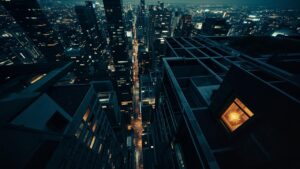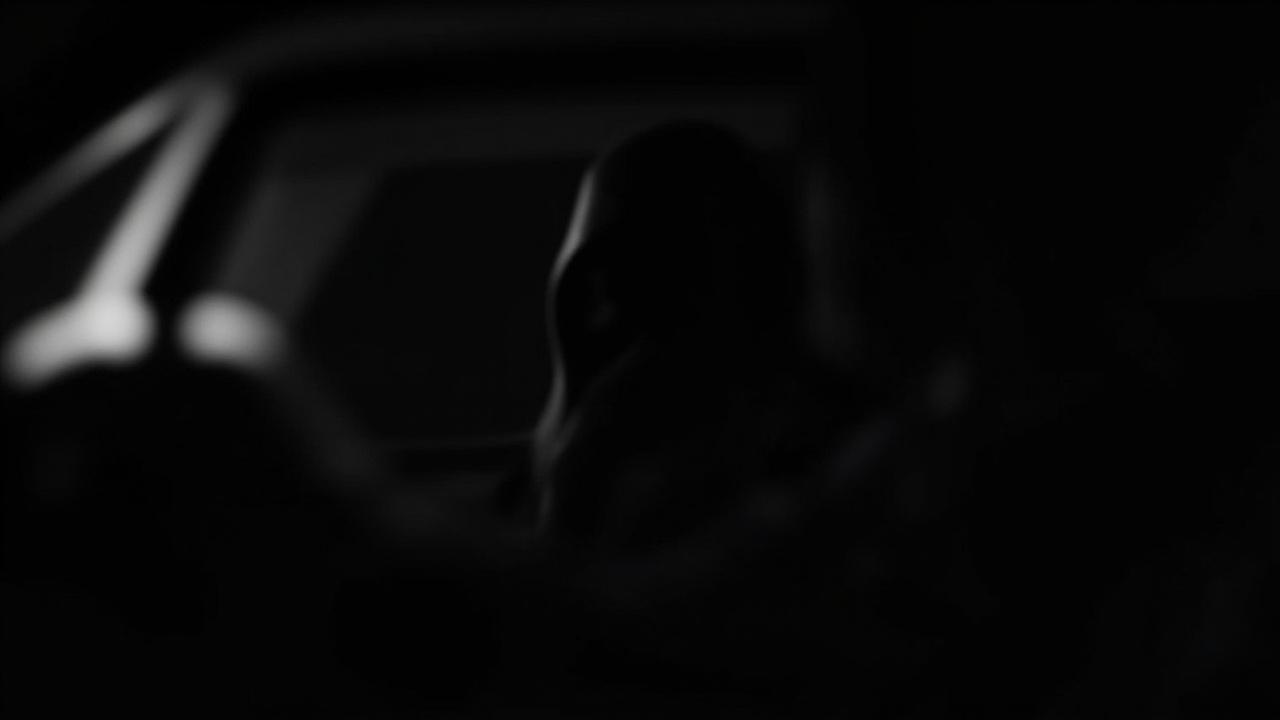Introduction
Torrance vandalism charges can arise from acts perceived as art. Imagine a vibrant mural suddenly appearing on a drab Torrance wall, sparking immediate debate: Is it a welcome splash of color, breathing life into the neighborhood, or simply illegal graffiti, defacing private property?
Vandalism, broadly defined, encompasses the destruction or damage of property. However, the line between artistic expression and vandalism blurs considerably when considering the subjective nature of art and the varying perspectives within a community. What one person sees as a creative masterpiece, another may view as an act of senseless defacement. This ambiguity is at the heart of many vandalism cases, especially when artistic intent is involved.
This article delves into the intricate legal landscape surrounding vandalism laws in Torrance, California, particularly focusing on situations where artistic expression is claimed as a defense. We aim to explore the complexities of proving intent, navigating the nuances of public versus private property, and understanding the potential consequences of a vandalism conviction. It is important to remember that the information provided here is for educational purposes only and should not be considered as legal advice.
Defining Vandalism Under California Law (And Torrance Municipal Code)
California Penal Code 594 PC meticulously defines vandalism, laying out the core elements that constitute this crime. It essentially boils down to maliciously damaging, destroying, or defacing another person’s property. The defacement aspect often involves graffiti or other inscribed materials, which frequently triggers concerns within the context of street art. To secure a conviction for California vandalism charges, including potential Torrance vandalism charges, prosecutors must prove beyond a reasonable doubt that the defendant acted with malicious intent.
The element of “malicious intent” is often a pivotal point in vandalism cases, especially when artistic expression is involved. Proving this intent requires delving into the defendant’s state of mind at the time of the alleged act. Did they genuinely intend to cause damage or destruction, or did they believe they were creating art?
Circumstantial evidence, such as the nature of the artwork, the location, the tools used, and any prior statements made by the artist, can all be used to infer intent. Unintentional damage, while regrettable, generally does not meet the threshold for vandalism under California law, although it could potentially lead to civil liability for the cost of repairs.
It’s important to note that the Torrance Municipal Code may also contain specific ordinances related to vandalism and graffiti, potentially outlining stricter penalties or addressing specific types of property damage. These local ordinances often complement state law and provide additional avenues for prosecuting vandalism offenses within the city. Penalties for vandalism in Torrance can vary widely, depending on the amount of damage caused.
- If the damage is less than $400, it’s typically charged as a misdemeanor, carrying potential fines and a jail sentence of up to one year.
- If the damage exceeds $400, it can be elevated to a felony, resulting in more severe penalties, including state prison time.
Furthermore, if the vandalism targets a protected group based on race, religion, ethnicity, or other characteristics, it could trigger hate crime enhancements, significantly increasing the potential penalties.
The Eye of the Beholder
Art or Vandalism: A Shifting Perspective
The crux of many Torrance vandalism charges, particularly those involving graffiti or street art, lies in the deeply subjective nature of art itself. What one person perceives as a vibrant expression of creativity, another might see as unsightly defacement. This difference in perspective is not merely a matter of personal taste; it can have significant legal ramifications, determining whether an individual faces criminal charges or is celebrated as an artist.
Consider a large-scale mural painted on a blank wall of a building. If the building owner commissioned the artwork, it is undoubtedly considered art. But if the mural was created without permission, the legal classification becomes far more complex, hinging on factors like community reaction, artistic merit (however subjective), and the intent of the artist.
Examples of Art Mistaken for Vandalism
Countless examples exist where artistic endeavors have initially been misconstrued as acts of vandalism. Think of temporary installations made from found objects, spontaneously appearing in public spaces. These could be quickly removed by local authorities before they have the opportunity to inspire or provoke thought.
Murals without prior approval, even those with positive messages or intricate designs, are also frequently targeted. Often, the determining factor is not the inherent quality or artistic value of the work, but rather the lack of official authorization. The lack of a permit can instantly change the perception of the artwork.
The Challenge for Law Enforcement
This subjective element poses a significant challenge for law enforcement in Torrance. Officers tasked with enforcing vandalism laws must make on-the-spot judgments about whether a particular piece of graffiti or street art constitutes a crime or a legitimate form of expression. Assessing artistic intent is particularly difficult. How can an officer determine whether someone intended to create a meaningful piece of art or simply to deface property with malicious intent?
Is it even possible? They must navigate this complex terrain, balancing the need to protect property rights with the importance of fostering artistic expression within the community. This can lead to inconsistencies in enforcement and raise questions about fairness and equity.
Proving Artistic Intent
When facing vandalism charges stemming from artistic expression, a robust defense strategy hinges on demonstrating that the artist’s intent was not malicious. The prosecution must prove beyond a reasonable doubt that the individual acted with the specific intent to damage or destroy property. To counter this, the defense should present compelling evidence illustrating the artist’s good faith and creative purpose. This evidence can take many forms and should be tailored to the specifics of the case.
One crucial aspect is showcasing preparatory work and planning. Sketches, blueprints, digital mock-ups, and any other form of pre-execution documentation can serve as powerful indicators of artistic intent. These materials can demonstrate that the work was not a spur-of-the-moment act of destruction but rather a carefully considered and planned creative endeavor.
Additionally, artist statements, which articulate the meaning and purpose behind the artwork, can provide valuable context for understanding the artist’s motivations. These statements can explain the thematic elements, the intended message, and the overall artistic vision.
Community involvement also plays a significant role. Evidence that the artist engaged with the community, sought input, or attempted to obtain permission (even if unsuccessful) can bolster the argument that the work was intended as a positive contribution rather than an act of vandalism. Testimonials from community members who support the artwork can further strengthen this point. Thematic coherence is another important factor.
If the artwork aligns with a consistent theme or message, it suggests a deliberate artistic choice rather than random destruction. For instance, a series of murals with a common theme of environmental awareness would indicate a clear artistic vision. Documenting the entire creative process, from initial concept to final execution, is essential for building a strong defense against torrance vandalism charges.
| Evidence Type | Purpose |
|---|---|
| Sketches/Blueprints | Demonstrates planning and premeditation |
| Artist Statements | Explains the meaning and intent behind the art |
| Community Involvement | Shows a desire to contribute positively |
The Lack of Permission Conundrum
Creating artwork, regardless of its perceived value or artistic merit, often runs into a significant hurdle: permission. In Torrance, as in many jurisdictions, creating art on private or public property without explicit authorization can complicate matters significantly. While the absence of permission doesn’t automatically translate to malicious intent, it undoubtedly strengthens the prosecution’s case when pursuing Torrance vandalism charges. It is a factor that law enforcement and the courts will heavily scrutinize.
Navigating the Aftermath: Seeking Retroactive Approval
One avenue to explore when faced with vandalism accusations stemming from unauthorized artwork is seeking retroactive permission. This involves approaching the property owner or relevant city authorities after the artwork has been completed and attempting to gain their approval. While this may seem like a long shot, it can be surprisingly effective in certain circumstances.
If the property owner appreciates the artwork and is willing to grant permission, it can significantly weaken the prosecution’s case, potentially leading to charges being dropped or reduced. Similarly, engaging with the community and demonstrating public support for the artwork can influence the city’s stance.
The Good Faith Belief Defense and Easement Laws
Another aspect to consider is the concept of “good faith belief.” Did the artist genuinely, and reasonably, believe they had permission to create the artwork? This could involve a misunderstanding with a property manager or a misinterpretation of local regulations. If the artist can demonstrate a reasonable basis for their belief, it can serve as a mitigating factor in their defense.
Furthermore, understanding easement laws and public access rights is crucial. Some properties may have easements granting public access, potentially allowing for artistic expression in certain areas. Navigating these legal nuances requires a thorough understanding of local ordinances and property law, highlighting the importance of consulting with legal counsel when facing charges for an artistic endeavor.
Legal Defenses Beyond Artistic Intent
Beyond arguing that an act was artistic expression and therefore not malicious, several other legal defenses can be employed when facing accusations of vandalism in Torrance. These defenses focus on challenging the prosecution’s case or demonstrating circumstances that mitigate the defendant’s culpability. One such defense is mistaken identity. The prosecution must prove beyond a reasonable doubt that the accused was the person who committed the act of vandalism.
An alibi, supported by credible witnesses, can be a powerful tool in establishing that the defendant was elsewhere at the time of the incident. Furthermore, challenging the validity of the evidence presented by the prosecution can be effective.
If the evidence was obtained illegally, such as through an unlawful search and seizure, it may be suppressed, weakening the case against the defendant. Even when there is proof of vandalism, the defendant may be able to argue that there was no actual damage caused, that the “damage” was of minimal importance, or that the cost to repair it was far less than the prosecution alleged.

Another potential defense involves demonstrating that the defendant acted under duress or coercion. If the defendant was forced or threatened into committing the act of vandalism against their will, they may not be held criminally liable.
This requires proving that they were under immediate threat of serious bodily harm or death if they refused to commit the act. Similarly, if the defendant was manipulated or deceived into committing the act, they may be able to argue that they lacked the necessary intent to commit vandalism.
For example, a scenario might involve an individual being told they were participating in a sanctioned public art project, only to later discover it was illegal. These defenses require careful investigation and presentation of evidence to demonstrate the external pressures or manipulations that influenced the defendant’s actions. The effectiveness of these defenses varies based on the specific facts of the case and the applicable laws and legal precedents related to the torrance vandalism charges.
Finally, in certain cases, intoxication might be presented as a defense, though it is often a difficult one to succeed with. To be a viable defense, the defendant must have been so severely intoxicated that they were incapable of forming the specific intent required to commit the act of vandalism. This means they were unable to understand the nature of their actions or appreciate the consequences.
This defense is typically reserved for situations involving extreme intoxication, and it is not a valid defense if the defendant voluntarily became intoxicated knowing they might engage in unlawful behavior. Each of these legal defenses offers a potential avenue for challenging vandalism charges beyond the argument of artistic intent, and a skilled defense attorney can assess the specific circumstances of the case to determine the most appropriate and effective defense strategy.
| Defense | Description | Key Evidence |
|---|---|---|
| Mistaken Identity | Accused was not the perpetrator. | Alibi, witness testimony, surveillance footage. |
| Lack of Evidence | Evidence was illegally obtained or insufficient. | Challenging the validity of search warrants, questioning the chain of custody. |
| Duress/Coercion | Act was committed under threat or manipulation. | Witness testimony, documentation of threats, evidence of deception. |
| Intoxication | Defendant was severely intoxicated and lacked intent. | Expert testimony, blood alcohol content (BAC) evidence, witness accounts. |
Consequences of a Vandalism Conviction in Torrance
A vandalism conviction in Torrance carries repercussions extending far beyond a simple monetary fine. While financial penalties are certainly a factor, individuals found guilty of vandalism can face a spectrum of punishments that significantly impact their lives. These penalties often include potential jail time, the length of which is determined by the severity of the damage and prior criminal history.
Probation is another common consequence, requiring regular check-ins with a probation officer and adherence to specific conditions, such as maintaining employment and abstaining from drug use. Additionally, community service is frequently mandated, requiring the convicted individual to contribute their time to public works projects or other forms of civic duty.
Beyond the immediate penalties imposed by the court, a criminal record resulting from a vandalism conviction can cast a long shadow on an individual’s future prospects. Potential employers often conduct background checks, and a vandalism conviction can be a significant deterrent, particularly for positions requiring trust and responsibility. Similarly, securing housing can become more challenging with a criminal record, as landlords may be hesitant to rent to individuals with a history of property damage.
Even educational opportunities can be affected, as some colleges and universities may consider criminal records during the admissions process. The stigma associated with a vandalism conviction can therefore create substantial obstacles to personal and professional advancement.
Restitution to the property owner is another significant consequence of a vandalism conviction. This involves the court ordering the convicted individual to pay for the damages they caused. This can include the cost of repairing or replacing damaged property, as well as any associated expenses incurred by the property owner.
Furthermore, it’s important to remember the potential for civil lawsuits, where the property owner can seek additional compensation for their losses, including pain and suffering. Non-citizens facing `torrance vandalism charges` should also be aware of potential immigration consequences, as a criminal conviction can impact their ability to remain in the United States or obtain citizenship.
Finding Legal Representation
When facing accusations related to property damage, especially in cases where artistic expression is a factor, securing experienced legal representation is not just advisable – it’s crucial for protecting your rights and future. A skilled attorney can analyze the specifics of your case, identify potential weaknesses in the prosecution’s argument, and construct a robust defense strategy tailored to your circumstances.
This is especially important when navigating the nuances of California Penal Code 594 and the Torrance Municipal Code, both of which define vandalism and outline the associated penalties.
A criminal defense attorney specializing in property crimes within the Torrance area brings a wealth of knowledge regarding local court procedures, precedents, and the tendencies of local prosecutors. They can thoroughly investigate the circumstances surrounding your Torrance vandalism charges, gather evidence, and interview witnesses to build a compelling narrative on your behalf.
Furthermore, a lawyer can negotiate with the prosecution to potentially reduce the charges, explore alternative sentencing options, or even get the case dismissed altogether. Without this expertise, you risk navigating a complex legal system alone, potentially facing severe consequences that could have been mitigated with proper representation.
When seeking legal counsel, prioritize finding an attorney with a proven track record in defending individuals facing vandalism or property crime charges. Look for someone who is not only knowledgeable about the law but also demonstrates a commitment to understanding your unique situation and fighting for your best interests.
Consider factors such as their experience in similar cases, their communication style, and their overall approach to client representation. Remember that the information provided here is for informational purposes only and does not constitute legal advice, consulting with a qualified attorney is the best way to understand your rights and options.
Conclusion
Navigating the line between artistic expression and illegal activity in Torrance demands a keen understanding of the law, artistic intent, and community standards. As we’ve explored, what one person perceives as a blight on the landscape, another might consider a powerful piece of art that enhances the urban environment.
The legal ramifications of vandalism, as defined by California Penal Code 594 and the Torrance Municipal Code, can be significant, potentially leading to fines, jail time, and a criminal record that impacts future opportunities. Therefore, it’s crucial for artists to be aware of the potential risks and to take proactive steps to protect themselves, such as seeking permits or collaborating with community organizations.
The key takeaway is that malicious intent is a critical component of vandalism. Proving that your actions were driven by artistic expression, rather than a desire to cause damage, can be a powerful defense. However, it’s important to remember that even with artistic intent, creating art without permission can complicate matters and strengthen the prosecution’s case. If you are facing Torrance vandalism charges, it is essential to remember you have rights.
Ultimately, the intersection of art and law in Torrance requires open dialogue and community involvement to shape public art policies that reflect the values and aspirations of the community. Understanding the nuances of the law, demonstrating artistic intent, and seeking legal representation are crucial steps in navigating this complex terrain.
Remember, this article is for informational purposes only and does not constitute legal advice. If you find yourself facing such a difficult situation, consulting with an experienced attorney is paramount to protecting your rights and future.
Frequently Asked Questions
What constitutes vandalism under Torrance city ordinances?
Vandalism in Torrance, as defined by city ordinances and aligned with California law, generally involves defacing, damaging, or destroying property that belongs to someone else. This can include actions like graffiti, breaking windows, keying cars, or any other deliberate act that diminishes the value or appearance of another’s property without their permission.
The intent to cause damage is a key element.
What are the potential penalties for a vandalism conviction in Torrance, California?
The penalties for a vandalism conviction in Torrance can vary greatly depending on the extent of the damage caused. Potential consequences can include fines, which can range from hundreds to thousands of dollars.
Additionally, a conviction may involve a jail or prison sentence, particularly if the damage is significant or if the person has prior convictions. Restitution to cover the cost of repairs or replacement is also a common requirement.
How does California’s Penal Code 594 apply to vandalism charges in Torrance?
California Penal Code 594 provides the foundation for vandalism charges in Torrance. This state law defines vandalism and sets out the parameters for determining the severity of the offense based on the monetary value of the damage. Local Torrance ordinances typically mirror or build upon this state law, ensuring consistent enforcement and prosecution of vandalism cases within the city.
If I’m charged with vandalism in Torrance, will I have a criminal record?
If you are charged with vandalism in Torrance and convicted, it will result in a criminal record. This record can have lasting implications, potentially affecting your ability to secure employment, housing, loans, and even travel in the future.
The specific impact of the record will depend on whether the conviction is for a misdemeanor or a felony, with felonies generally carrying more severe consequences.
What is the difference between misdemeanor and felony vandalism charges in Torrance?
The difference between misdemeanor and felony vandalism charges in Torrance hinges primarily on the dollar amount of the damage inflicted. If the damage is valued at $400 or less, it is generally charged as a misdemeanor.
However, if the damage exceeds $400, the charge escalates to a felony. A felony conviction carries significantly harsher penalties, including longer prison sentences and a more severe impact on one’s criminal record.









